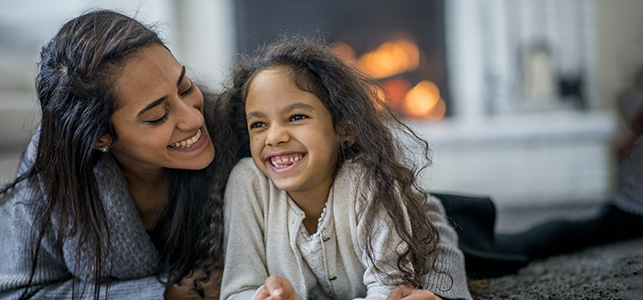
Keeping kids safe around gas fireplaces
‘Tis the season to cozy up next to the fireplace. While dangers of wood burning fires are well-known, there are safety concerns related to gas fireplaces too. Corri Miller-Hobbs, RN, program coordinator for Safe Kids Virginia at CHoR explains what precautions are needed to keep your family safe and warm this winter.
Gas fireplace glass can cause severe burns
The glass surface of a gas fireplace gets extremely hot as it radiates heat into the room. Oven glass doesn’t have nearly the same danger because ovens are intended to keep the heat in, though caution is needed there too.
The temperature of the glass surface on a gas fireplace can get as high as 500-1000 degrees Fahrenheit, hot enough to cause third degree burns in a second or less. It can also stay hot enough to cause serious burns for more than an hour after the fireplace is turned off.
The light and reflection produced by gas fireplaces are the perfect height to pique the curiosity of little ones. Couple this with the fact that young kids’ skin is thinner, and they don’t have the reflexes to pull away as quickly as adults and the stage is set for potentially significant injury.
Tips for preventing fireplace related burn injuries
The good news is that there are some steps you can take to prevent burns while enjoying the warmth and glow of your gas fireplace.
- A safety screen provides a protective barrier to prevent direct contact with the hot glass. Gas fireplaces made after 2015 are required to come with a safety barrier. If your gas fireplace is older, contact the manufacturer. Many offer retrofit screens at minimal or no cost.
- Talk with your kids about fireplace safety. Stress the importance of staying at least three feet away. Consider placing a visual marker, like a rug or baby gate, so they know the limit.
- If your gas fireplace has a remote, keep it out of reach of children.
- Take note of fireplaces at other homes, hotels, etc. your family visits and use the same precautions.
Don’t forget to keep pets away from the fireplace too!
Read Hattie’s fireplace injury story on the Safe Kids Worldwide website.
Carbon monoxide concerns with gas heating sources
Carbon monoxide is another consideration. Carbon monoxide is a colorless, odorless gas that’s produced when gasoline, wood, propane, charcoal or other fuels are burned. Gas fireplaces have a ventilation system that filters carbon monoxide outside, but if the system isn’t working properly, it can be released indoors. Prevent dangers associated with carbon monoxide by:
- Having your gas fireplace inspected annually to make sure it’s working as it should.
- Placing a carbon monoxide detector near the fireplace to alert you of a potential problem. It’s also important to have a carbon monoxide detector on every level of your home, especially near sleeping areas.
- Turning the fireplace off before leaving your home or going to sleep.
